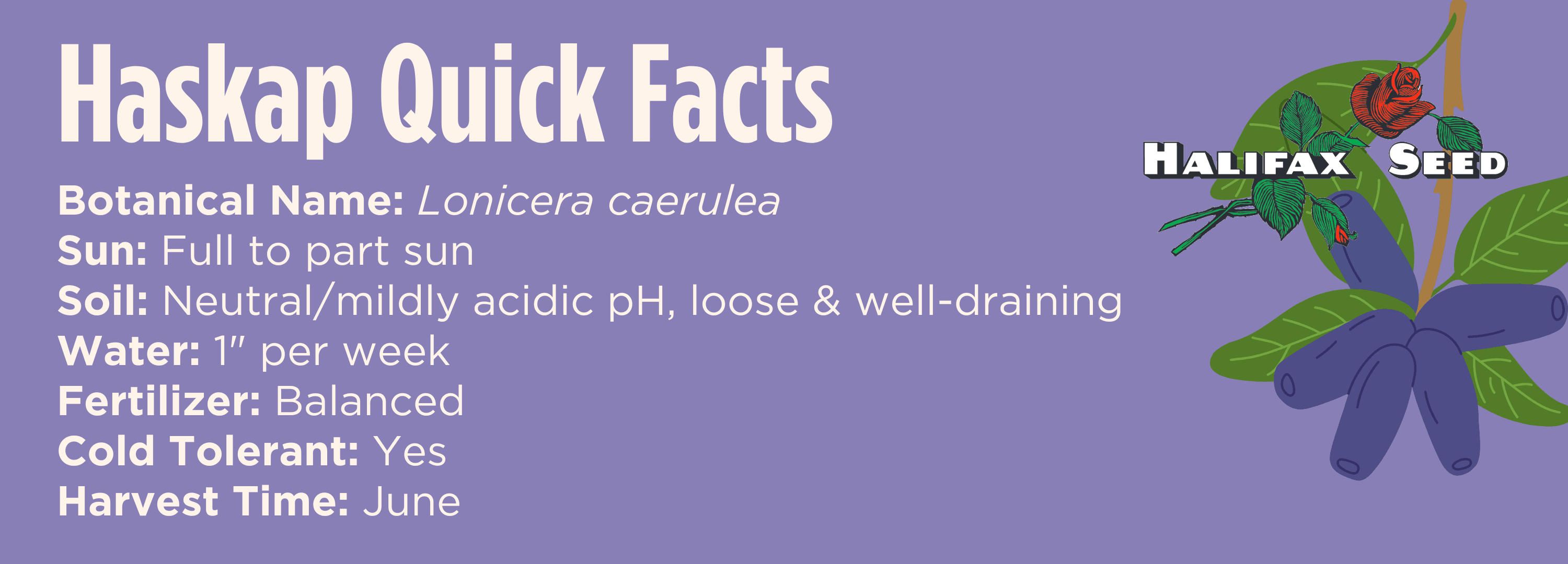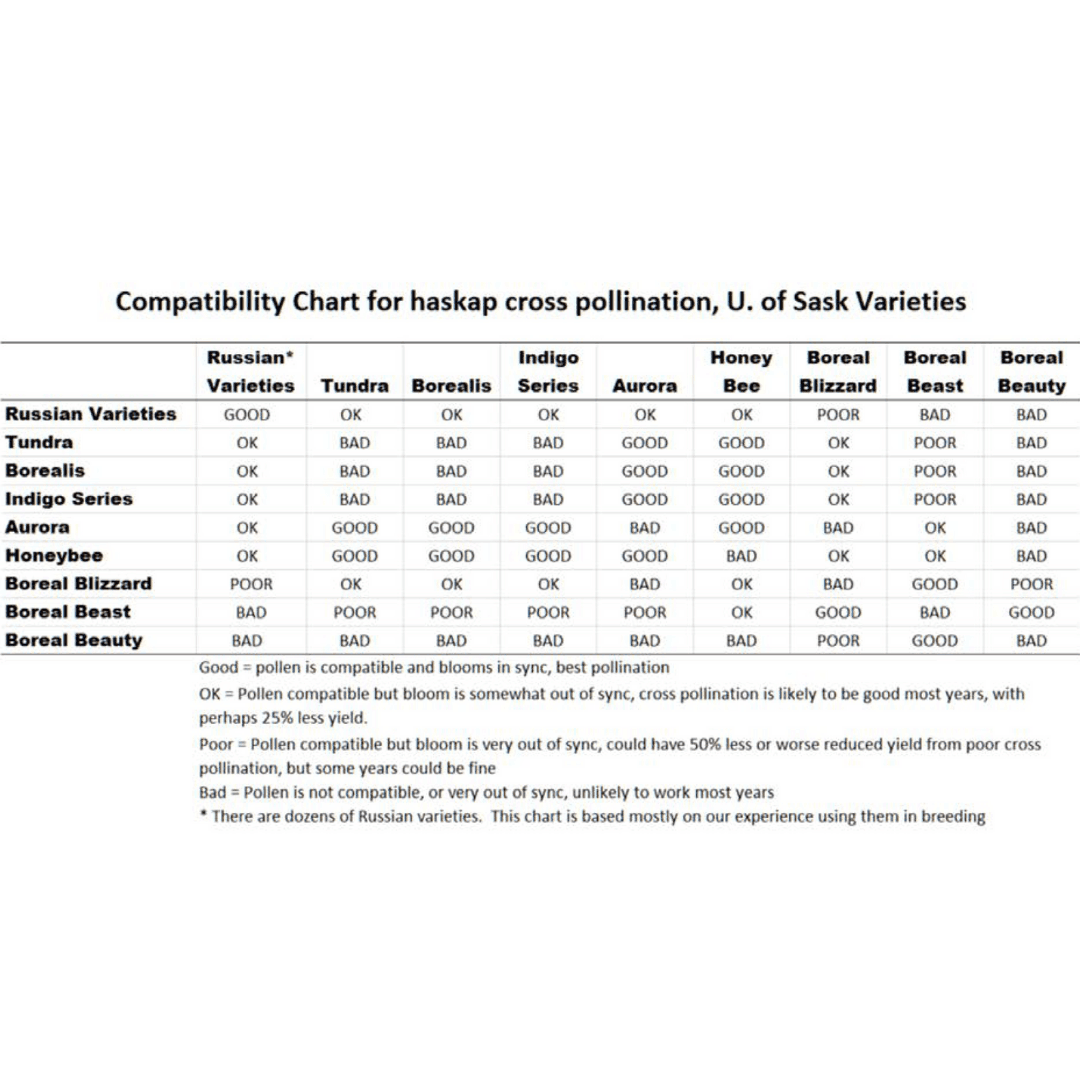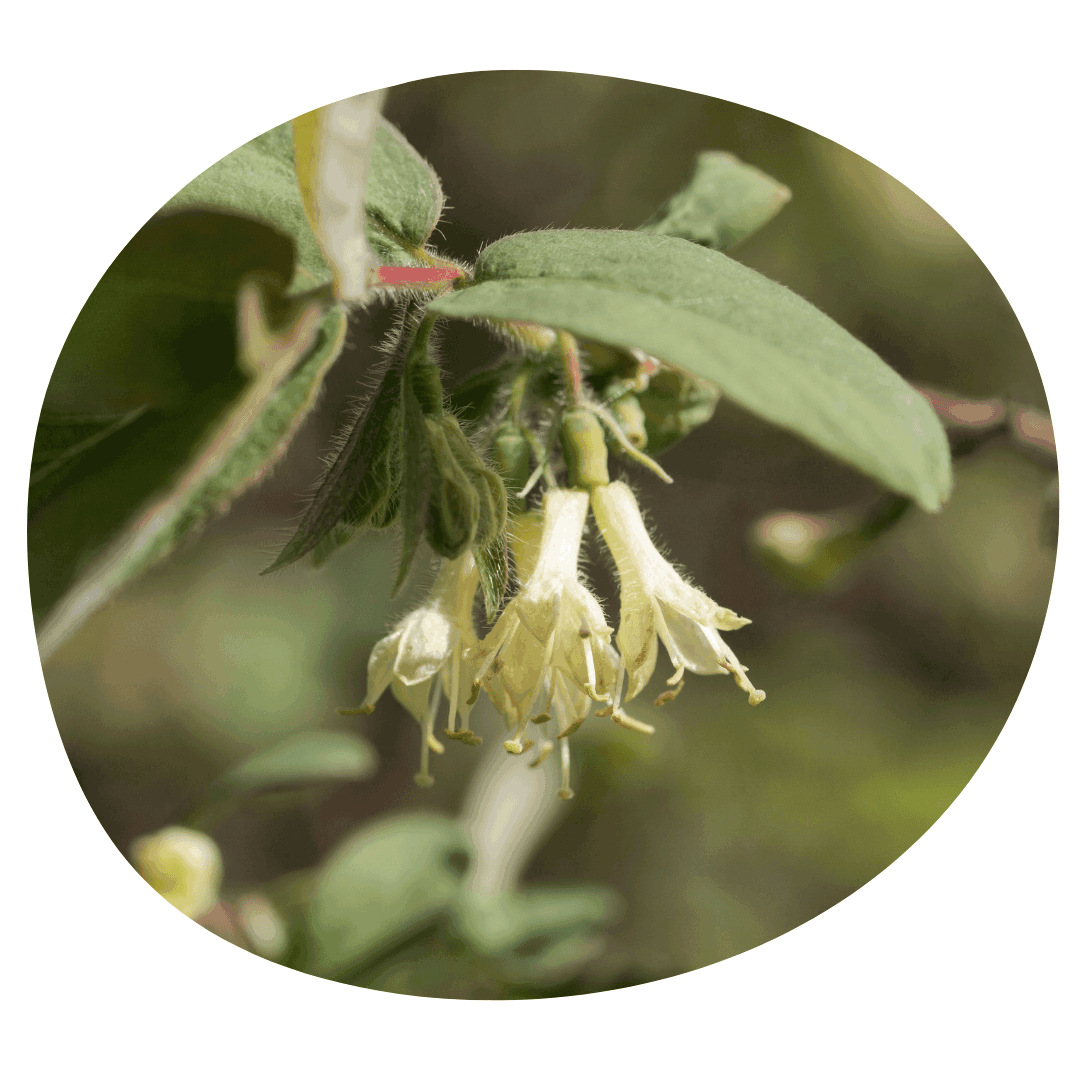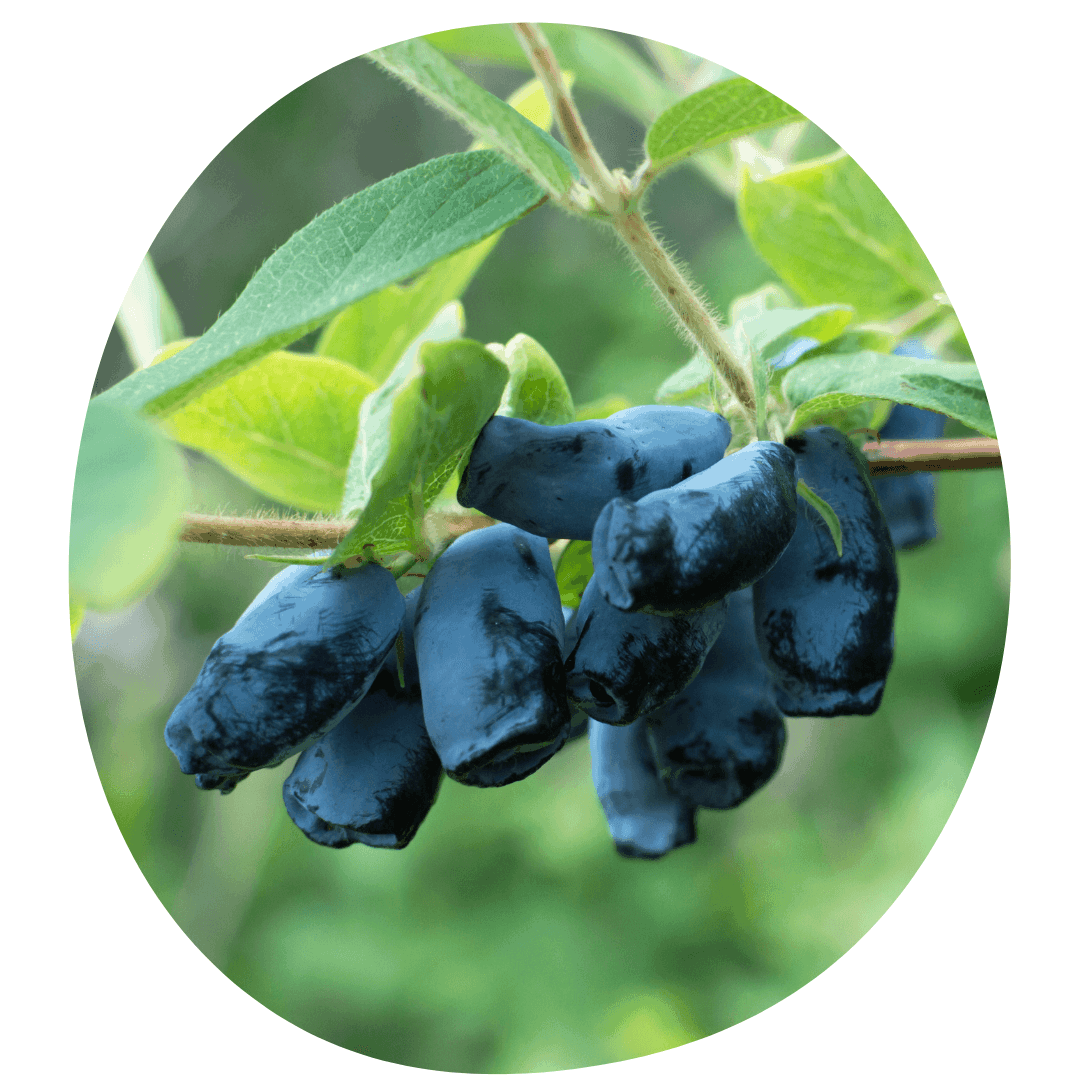How to Grow Haskaps

The Haskap (Lonicera caerulea), also known as honey berry or blue honeysuckle, are a relative of the vining honeysuckle often grown as a garden plant. The berries look somewhat similar to blueberries, with a sweet and tart flavour and smooth texture. They are a hardy shrub, able to withstand temperatures as low as -40 C (Zone 2).
Haskap bushes are versatile and hardy, making them an excellent choice for Canadian garden. They prefer a sheltered site with rich, well-draining, slightly acidic soil, with pH between 5 and 7. If you’re unsure about the pH level of your soil or would like to check it at the start of the growing season, you can use a simple pH test kit. To acidify your soil, add peat, aluminum sulphate, or another low pH soil amendment. Plants thrive and produce best in full sun but will grow in partial sun. Plants grow quickly, reaching heights between 4’ and 8’, and should be spaced at least 4’ apart.
Haskaps are a cool season fruiting shrub with early flowers which, when pollinated, mature into fruit in mid to late June. Berries are produced on one year old woody stems. Harvests can begin in the third year after transplant, and yields will increase in the following year.

How to Choose a Haskap

The Haskap originated in Siberia and was later cultivated by the University of Saskatchewan to improve performance in Canada and warmer zones. Haskap plants are self-incompatible, and require a second plant of a different variety for pollination. The two varieties should flower at the same time for successful pollination.
Common Haskap Varieties at Halifax Seed
Aurora – Reaches up to 6’ in height at maturity. Known for its super sweet flavour and low acidity, Aurora is a very productive variety. Aurora is a good pollinizer for Tundra, Borealis, Indigo, and Honey Bee varieties.
Borealis – Reaches 4’ high at maturity. The largest haskap berry, with soft skin and a sweet flavour. Berries should be harvested and handled gently. Borealis is a good pollinizer for Aurora, Honey Bee, Berry Blue, Boreal Blizzard, and Cinderella varieties.
Indigo Series – Reaches 4’ to 5’ in height at maturity. Indigo haskaps have a long flowering season, making them a great choice to cross pollinate other varieties. Indigo haskaps are good pollinizers for Aurora, Honey Bee, Boreal Blizzard, and Cinderalla varieties.
Tundra – Reaches 4’ to 5’ in height at maturity. Tundra’s berries are firmer than other varieties and have excellent flavour. Tundra is a good pollinizer for Aurora, Honeybee, Borealis, Berry Blue, Blue Belle, and Cinderella varieties.

How to Fertilize and Care for Haskaps
In the spring, apply compost or a slow release, balanced organic fertilizer around the base of the plant. Haskaps have a shallow root system and should be fertilized only when necessary. Fertilizing in the spring gives new growth time to harden off before the fall frost. Especially in the first year after transplant, keep the soil around the plant well-watered while the root system develops.
Haskaps require little pruning, but may be trimmed to maintain your preferred shape and height. The best time to prune is in mid-winter or early spring. Remove any dead or diseased wood, and old branches that are no longer heavily producing. You may also prune back branches that cross or touch to allow for proper airflow and light penetration. Keep in mind that berries are borne on one year old wood and you need a continuous supply of these branches from year to year to produce fruit. Never remove more than 25% of the bush at a time.
How to Harvest Haskaps

Birds will eat unripe haskaps before you have a chance to enjoy them, so we recommend placing bird netting over your plants to retain your harvest.
After 3 years, haskap plants will produce great yields. Berries will look ripe on the outside up to 10 days before they are actually ripe on the inside. Berries should be completely purple on the inside and outside before harvesting. In some varieties, all berries will ripen simultaneously; with other varieties, they may ripen gradually. Depending on the firmness of each variety's berries, they can either be harvested by shaking (put a catch basin underneath before shaking) or handpicking.
Haskap berries will store in the fridge for up to a week after harvest. Berries can be stored in the freezer for over a year. They're also popular dried and eaten like raisins!
| Return to Tips & Inspiration |